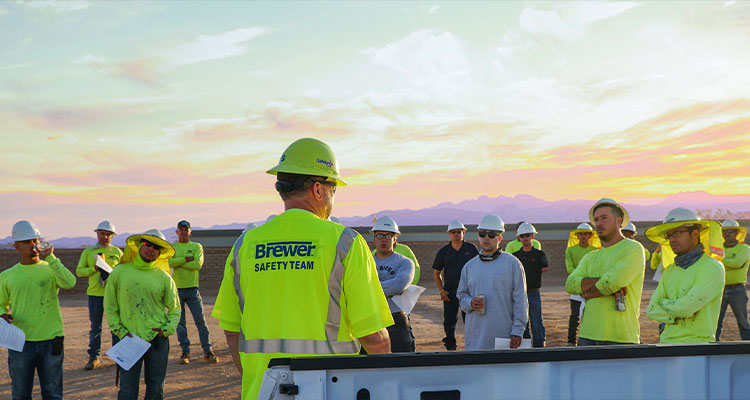
Communication breakdowns take construction projects off course. Rich Gallagher advises how to fix them
Construction is a team sport that requires a coordinated effort from architects, builders, subcontractors, and suppliers, all working toward a common goal. The only way to succeed is for each player to perform their role effectively and communicate well. Despite the industry’s reliance on teamwork, true collaboration remains rare.
The best construction companies – the ones that consistently complete projects on time and within budget – understand that their success shouldn’t trump others. Keeping everyone aligned from start to finish makes it more likely that a project will finish on time, and everyone, from the builder to the homeowner, will be happy with the final product.
 A recent analysis by Touchplan, which examined over 321,000 construction activities, identified misaligned schedules in handoffs as the biggest drivers of delays. Material shortages and labor constraints typically get most of the blame, but it all goes back to communication.
A recent analysis by Touchplan, which examined over 321,000 construction activities, identified misaligned schedules in handoffs as the biggest drivers of delays. Material shortages and labor constraints typically get most of the blame, but it all goes back to communication.
Subcontractors are often skeptical of builders’ scheduled completion dates due to inconsistent updates and a history of unreliable timelines. Industry inefficiencies frequently result in missed deadlines, cost overruns, and frustrated homebuyers left in limbo. When demand surges, the lack of coordination makes it impossible for the industry to adapt.
The reality is that construction isn’t linear – it has its peaks and valleys. When stakeholders don’t communicate well, the industry can’t meet demand even when the market is looking up. When the picture is bleak, disorganization makes downturns even more painful, leading to job losses, stalled projects, and financial uncertainty across the supply chain.
Why communication is so fragmented
The construction industry operates through a patchwork of builders, subcontractors, suppliers, and local regulators, each with its own systems, priorities, and levels of technological adoption. Many subcontractors are small, family-owned businesses that have historically worked independently, leading to a culture resistant to centralization. This decentralization creates inconsistency in sharing information, making it difficult to track progress, identify bottlenecks, or implement industry-wide best practices.
Compounding the issue is that no single entity oversees communication across projects. Builders often juggle multiple subcontractors with different levels of sophistication, from those using advanced software to those still relying on paper records. This variation can lead to delays, redundant work, and oversights. A project’s success often depends on the ability of these disparate parties to work together effectively, but without a standardized communication system, critical details can slip through the cracks.
The problem extends beyond subcontractors and builders – suppliers must also navigate a fragmented landscape. Delays in material deliveries, changes in work orders, and shifting project timelines all require precise coordination. These issues frequently result in wasted time and added costs. When a delay in one part of the process isn’t promptly communicated down the line, it creates ripple effects that can derail an entire project.

It’s a people problem
Construction can often feel like an industry stuck in the 20th century, but technology only takes you so far. It won’t fix a lack of alignment and trust. Misalignment at the planning stage leads to obstacles down the line. Failure to establish clear expectations at the outset creates a domino effect of delays, rework, and unexpected costs. Even the most advanced scheduling technology becomes useless without a shared commitment to seamless coordination.
The real fix is a cultural shift where builders and subcontractors operate as partners, not separate entities working in isolation. Success depends on creating an environment where transparency and reliability replace uncertainty and second-guessing. Open dialogue from the start of a project allows for early identification of potential issues and helps reduce friction throughout the build.
Some projects have started embracing a more communication-focused approach, proving that collaboration doesn’t just make work more manageable – it makes it more profitable. When builders and subcontractors align their priorities and share information proactively, bottlenecks dissipate, project timelines stabilize, and costly missteps decrease. This shift in mentality has the potential to redefine the construction industry, making it more resilient and adaptable in an unpredictable market.
What needs to change
Structured communication needs to be a priority for the industry to move forward. Builders and subcontractors should function as partners, transparently sharing schedules and expectations instead of working reactively. Establishing dedicated coordination roles – such as on-site superintendents who manage communication – ensures alignment at every stage of a project.
In addition to clear communication between builders and subcontractors, suppliers must also be integrated into the process. Too often, breakdowns in material availability or delivery timelines occur because there is no structured flow of information between all parties involved. Creating a unified communication protocol with real-time updates and regular check-ins can prevent these costly disruptions.
Construction demand will continue to fluctuate in the coming years. The companies that recognize communication as a competitive advantage will be the ones that navigate the next wave of challenges most effectively. Those who invest the time in building strong communication frameworks will be agile enough to confidently handle unexpected shifts, workforce shortages, and evolving project requirements.
Rich Gallagher
Rich Gallagher is CEO at Synergos Companies, an innovative corporation in the homes industry with a business model focused on making construction projects an integrated process. The Synergos family of companies currently includes Austin Companies, Brewer Companies, Door Sales & Installations (DSI), Erickson Companies, Focus Companies, and ODC Construction. Synergos Companies currently operates in four states and has nearly 3000 employees.